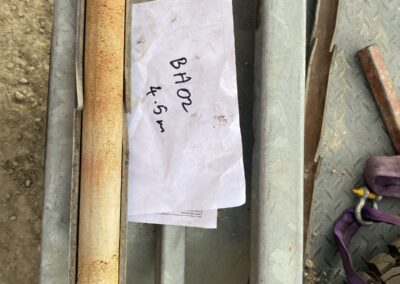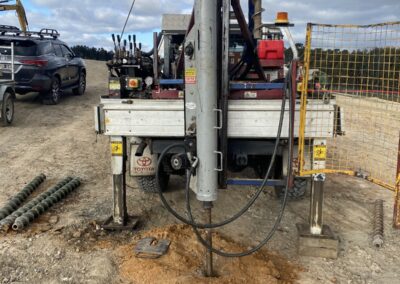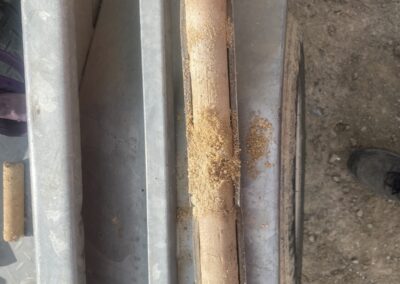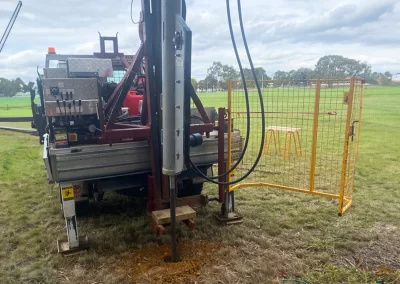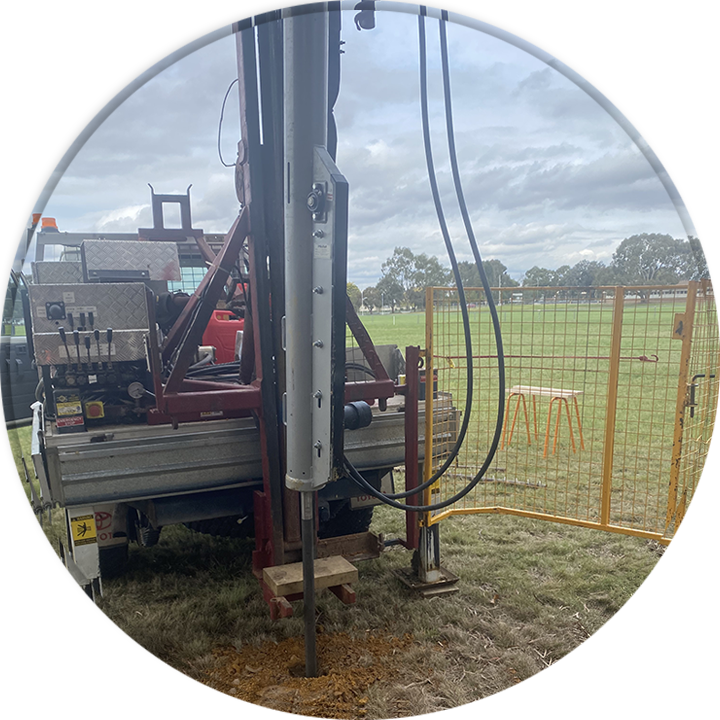
STANDARD
PENETRATION TEST
(SPT) – AS 1289.6.3.1 -2004
A delicate dance with the earth, revealing its whispers to guide your vision skyward.
Standard Penetration Test Soil Sample
Close-up analysis of soil samples helps determine soil strength, density, and suitability for different foundation types.
SPT Drilling Rig Setup in Melbourne, Victoria
This mobile drilling rig efficiently conducts SPTs at various locations, providing crucial data for foundation design.
Clyde SPT Soil Sample Analysis
Detailed analysis of soil characteristics extracted through SPTs helps engineers optimize foundation plans for specific site conditions.

